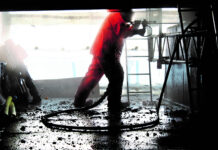
THE UK construction industry has taken a ‘massive step forward’ after NEC released a new conflict avoidance practice note.
That’s the view of experienced construction industry consultant Len Bunton, who was responding to news of the note, which provides guidance on the conflict avoidance clauses and process to coincide with the recent inaugural Conflict Avoidance Week 2025, a new initiative from the Conflict Avoidance Coalition.
The clauses set out a procedure to be used in an NEC4 contract to resolve disagreements at an early stage by using a conflict avoidance panel. In addition, the RICS has published RICS CAP (Conflict Avoidance Process) Rules, a flowchart and Sample CAP short and long form clauses to be included in contracts.
Len Bunton, who is chair of the Conflict Avoidance Coalition, told Project Scotland, “This is a massive step forward for the Conflict Avoidance Process. Now is the time to ensure that this process is embedded into contracts being entered into, and also to embed into supply chain contracts.”
Len previously explained that the Conflict Avoidance Coalition encourages organisations to sign up to the Conflict Avoidance Pledge (CAP), which is a commitment to early intervention to resolve issues emerging on projects, and conflict avoidance. Signatories are expected to maintain good business relationships, strive to deal with issues which crop up on projects early and amicable, and embed the CAP principles into their workplace culture.
Shy Jackson, a specialist in construction law and a partner at Bryan Cave Leighton Paisner LLP, as well as an NEC Contract Board member, said that while disputes are common on construction and infrastructure projects, they can affect delivery and result in unnecessary costs and disruption.
“This is being increasingly recognised and is behind the growing use on collaborative contacting, with NEC being the main collaborative construction form of contract used in the UK, as well as internationally in places such as South Africa, Australia, Hog Kong and Peru,” he explained. “The nature of NEC is that is includes various mechanisms that help avoid disputes by dealing with issues as soon as they arise, including the use of early warnings and the process for having an agreed programme and contemporaneous assessment.
“This helps creates a culture that encourages open and honest communications, which in turn helps reduce disputes, but NEC also contains dispute resolution clauses that set out a process designed to resolve differences before they escalate and lead to formal court or arbitration proceedings.
“NEC contracts are therefore very aligned with the aims of the Conflict Avoidance Coalition and this is why NEC has updated the clauses, originally published in 2022, which can be used by parties to implement the Dispute Avoidance Process under Options W1 and W2, in addition to the option of using Dispute Avoidance Boards as provided by Option W3 (which can be used in the UK as set out in the NEC4 ECC Practice Note 5).”
Shy added that the use of such clauses will ‘send a clear message’ about the parties’ willingness to do what is necessary at an early stage to avoid disputes where possible and provides a contractual process to support such efforts.
“We expect that this will be increasingly considered as an alternative to more formal dispute resolution proceedings and will promote collaborative behaviours as well as reducing the adverse impact of disputes,” he continued. “There has been a good take up by many industry bodies, including some of the largest employers and contractors, which is a positive sign.
“The test however will be the extent to which such a commitment is followed in practice and whether such clauses will be used and implemented in projects so that they result in a real change. That is the challenge for the industry but the increasing awareness of the importance of conflict avoidance bodes well and any movement from the traditional adversarial behaviours is to be welcomed.”











